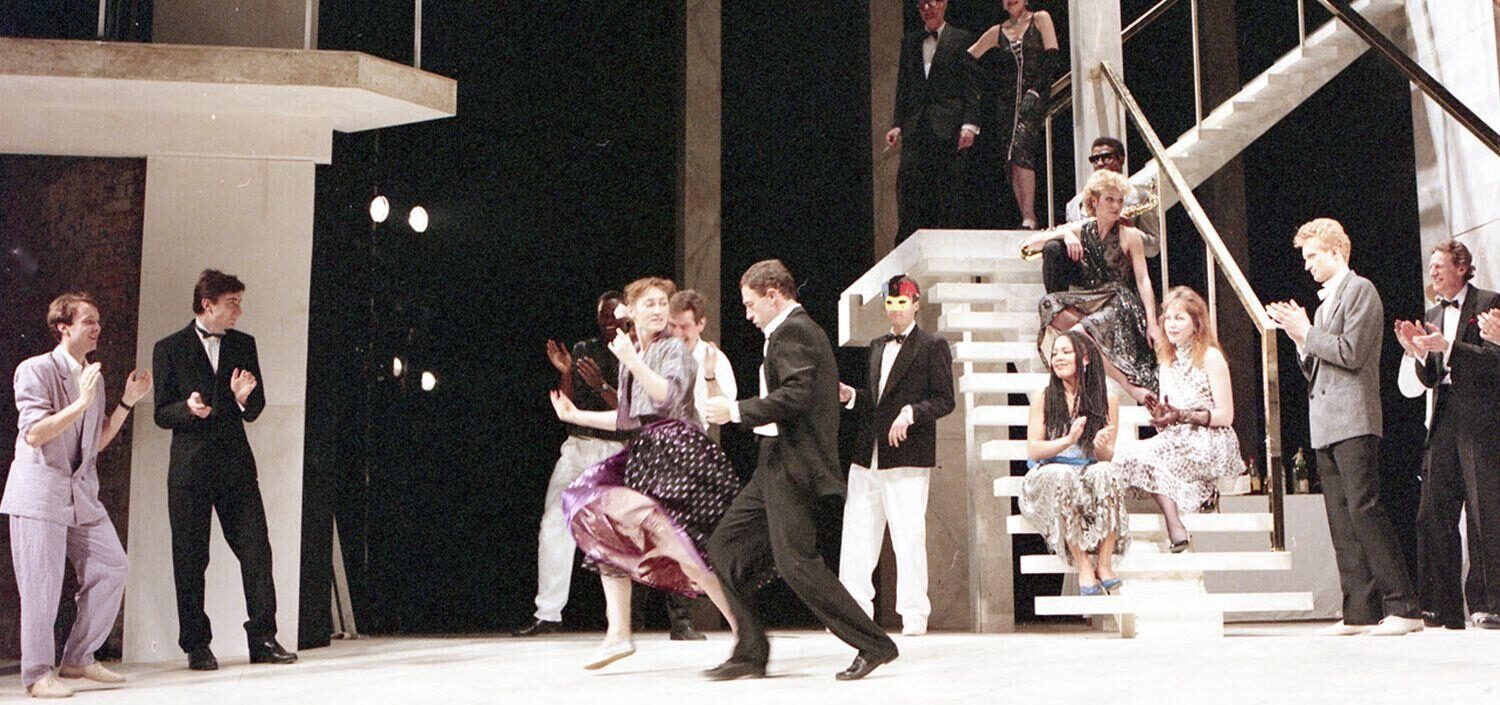The RSC’s ‘Yuppie’ Romeo and Juliet
Considered one of the most important theatre companies of the twentieth century, the Royal Shakespeare Company (RSC) has an impressive production history. Specialising in the works of William Shakespeare, its productions have a reputation for being highly researched, often featuring innovative staging and costuming, and even introducing new technologies to the theatre. The RSC and its predecessor the Shakespeare Memorial Theatre have created productions that are considered to be of huge significance, including Peter Brook’s radical 1970 production of A Midsummer Night’s Dream, and Gregory Doran’s 2016 production of The Tempest, which utilised CGI technology in ways never before seen in the theatre.
The RSC’s archive provides more than just a documentary record of a theatre company: it can be used to survey how interpretations of the works of Shakespeare and other playwrights, and even theatre as an art form have evolved over more than a century.
At the heart of the archive are prompt books recording the RSC and its predecessor’s productions, dating from the late nineteenth-century to the 2010s. Together with materials such as production records, photographs and original designs for some of the company’s most important productions, these can now be accessed online in AM’s resource Royal Shakespeare Company Archives: From Playwrights to Performance.
One of the most visually stunning productions highlighted in the resource is a 1986 ‘Yuppie’ Romeo and Juliet, directed by Michael Bogdanov and starring Sean Bean and Niamh Cusack. The play’s setting of Renaissance Italy was transformed into a contemporary northern Italian city obsessed with wealth and status, and its prompt book reveals a great deal about the production.

Romeo and Juliet, 1986: The Capulets' Ball. Joe Cocks © Shakespeare Birthplace Trust. Material sourced from the Royal Shakespeare Company archive.
For example, the dance which follows the masked ball in Act 1, Scene 5 of the play was transformed into a wild party. Directions opposite page 77 of the prompt book include instructions for Mercutio, who has joined a group of musicians on a balcony, to play a guitar solo and then ‘swallow dive’ into a crowd below. At the end of this scene, we move swiftly onto Act 2; the chorus between the two scenes was cut.
Famously, this production transformed the play’s Prologue into a coda read by Prince Escalus during a press conference scene that concluded the play. This follows directly after Juliet’s death. A whole 140 lines from the play’s final scene – including the Prince’s famous line ‘For never was a story of more woe / Than this of Juliet and her Romeo’ – were cut, and can be found at the end of the prompt book, crossed out.
And no longer are some to be pardoned, and others to be punished, per the original script. Instead, instructions for the press conference scene call for Prince Escalus to call ‘Mon[tague] + Cap[ulet] to centre – they shake hands – photo’, implying that the Prince is keen to present himself as a peacemaker before the media (actors manning television cameras, sound equipment, and flash cameras). The list of props required for the final scene includes ‘1x tomb’, ‘tray of drinks x14’, a syringe, and a bottle of poison.
The latter two props proved to be a source of some contention. Although Romeo (Sean Bean) was supposed to inject himself with poison, the stage manager’s reports testify that Bean had decided that drinking poison from the bottle ‘work[ed] better’; he was eventually ‘informed… that he must go back to the syringe’.
Contention surrounding these props aside, the production was a critical success; and the presence of another prop, a red Alfa Romeo sportscar, led to this exciting presentation being dubbed ‘Alfa Romeo and Juliet’.
About the author
Matthew Brand is an Editor at AM.
About the collection
Royal Shakespeare Company Archives: From Playwrights to Performance is out now. The two documents quoted in this blog - the prompt book and stage manager’s reports - are available open access for 30 days.
Recent posts

The blog highlights American Committee on Africa, module II's rich documentation of anti-apartheid activism, focusing on the National Peace Accord, global solidarity, and student-led divestment campaigns. It explores the pivotal role of universities, protests, and public education in pressuring institutions to divest from apartheid, shaping global attitudes toward social justice and reform.

This blog examines how primary sources can be used to trace the impact of young voices on society, particularly during pivotal voting reforms in the UK and the US. Explore materials that reveal insights into youth activism, intergenerational gaps, and societal perceptions, highlighting their interdisciplinary value for studying youth culture, activism, and girlhood across history.
